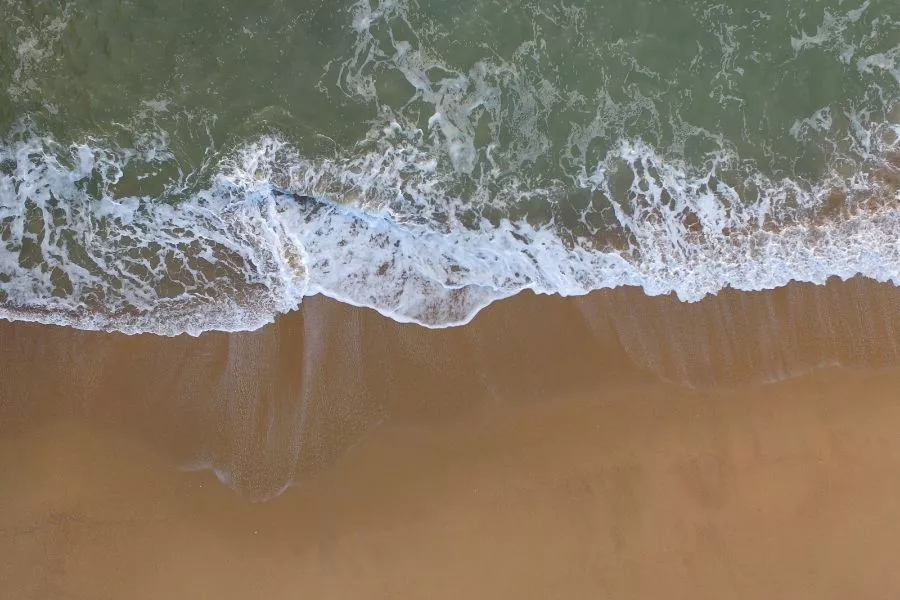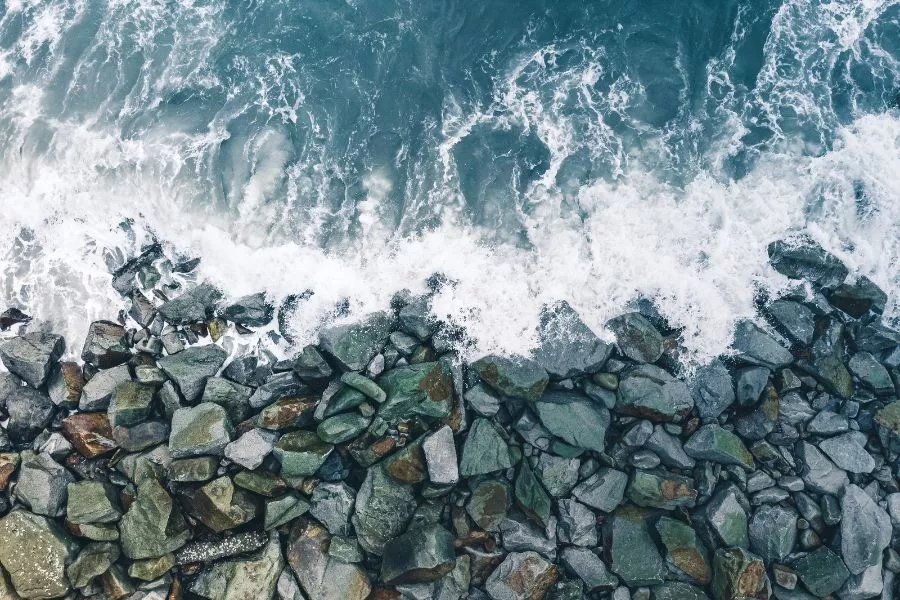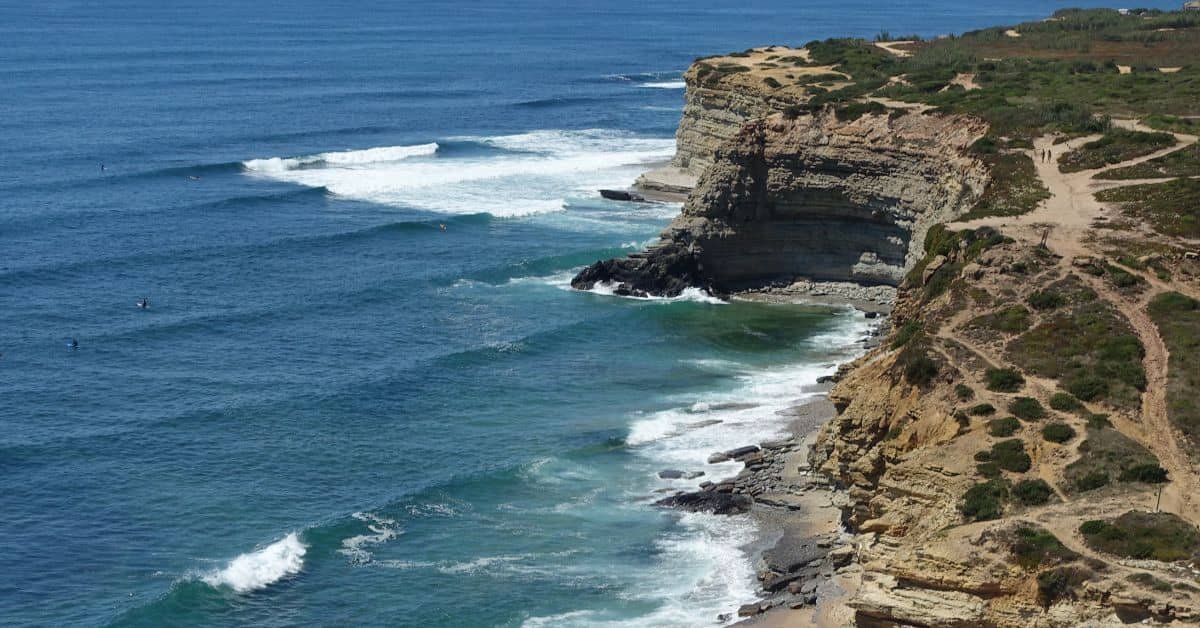Coastal processes are the various ways in which the sea interacts with the land. These interactions can take many forms, from the crashing of waves against the shoreline to the gentle flow of water over a sandy beach. Coastal processes play an important role in shaping the landscape, as they can cause erosion and deposition of sediment.
Coastal processes
The Coastal zone is affected by marine processes. It stretches from the landward limit of tides, waves, and wind-blown coastal dunes to where waves interact with the seabed. Marine and atmospheric activities build rocky coasts, beaches, dunes, barriers, and tidal inlets, and shape deltas.
Temperature, precipitation, and winds are atmospheric processes; waves, tides, temperature, and salinity are marine. Salt marshes, mangroves, seagrass, and coral reefs thrive along the coast. Shallow waters, plentiful sunlight, terrestrial and marine nutrients, tide and wave flushing, and a variety of habitats support coastal biodiversity.
Waves
Waves are one of the most powerful agents of coastal change, as they have the ability to transport large amounts of sediment and erode away weak rock. The force of waves can also create features such as caves, arches, and stacks.
Wind
The wind is another important factor in coastal processes, as it drives currents and determines the direction in which waves travel. The wind can also shape sand dunes and affect the movement of water within estuaries. The tidal range is another important factor that affects coastal processes.
Tides
Tides are generated by the gravitational pull of the moon and sun, and they cause water to rise and fall twice each day. The size of the tidal range varies depending on a number of factors, including the position of the moon and sun, and the shape of the coastline.
Tides play an important role in coastal processes as they can cause erosion and deposition of sediment. They can also lead to changes in water levels, which can affect plant growth and wildlife habitats. Understanding coastal processes are essential for managing coastal areas effectively and minimizing the impacts of human activity on these dynamic environments.

What factors affect coastal processes?
There are many factors affect coastal processes. Important factors and driving forces of estuaries (Coastal Zones) are described below –
Circulation and Tidal Regime
Circulation is the physical process that influences or controls many of the ecological processes occurring in coastal areas, including the degree to which coastal area is dominated or modified by hydrodynamics. The three major driving forces behind the circulation patterns in coastal areas are:
- Gravitational circulation
- Tidal circulation and
- Wind-driven circulation
Habitat types
Coastal marine waters are inherently heterogeneous systems. Greater numbers of species are typically observed at the marine end of the salinity gradient, with the fewest numbers observed in about 3 – 7 ppt. Habitats’ coastal marine waters can be classified into nine major categories. These habitats are –
Open water: Important for phytoplankton production and sometimes for their blooms.
Soft bottom substrates: Soft-bottom substrates provide habitat for economically valuable clams shrimp and juvenile flatfishes.
Hard Bottom Substrates: Hard bottom substrates can include offshore rocky outcrops, oysters, relic shell and worm tube reefs, and relic limestone and coral outcrops, which also provide commercially valuable organisms.
Aquatic Macrophytes: Macrophyte beds are among the most important estuarine habitats both ecological and economically.
Beaches: Beaches are an accumulation of unconsolidated sediment (e.g., sand, cobble) extending shoreward from the near low tide line to the point where permanent vegetation is established.
Sandflats: Deposits described as “fine sand” contain silts and clays and harbor rich communities of both deposit and suspension feeding in vertebrates.
Mudflats: Mudflats provide habitat for commercially important clams and other invertebrates and feed habitats for fishes and shorebirds.
Emergent Marshes: Emergent marshes may be critical components of estuaries, coastal marine embayment, and lagoons because they filter stormwater runoff from cities, forests, and agricultural areas. Emergent marshes may also provide flood protection and reduce the erosive energy of wave action.
Mangrove Forests: Low-lying tropical coasts are often bordered by dense mangrove forests mangrove forest. Mangrove forests and their associated waters provide valuable habitats for a range of invertebrates, fishes, amphibians, reptiles, birds, and mammals.

Water Column Characteristics
Salinity: Salinity is a key determinant in the distribution of coastal flora and fauna, especially for benthic invertebrate communities. The best-known coastal zonation system (the Venice system) is based on salinity and establishes five salinity zones:
- Limnetic ———- 0 – 0.5 ppt
- Oligohaline ——- 0.5 – 5 ppt
- Mesohaline ——- 5 – 18 ppt
- Polyhalite ———18 – 30 ppt
- Euryhaline ———– >30 ppt
Salinity may be defined as the total solids in water after all carbonates have been converted to oxides, all bromide and iodide have been replaced by chloride, and all organic matter has been oxidized and is usually reported as grams per kilogram or parts per thousand (ppt). Salinity is most commonly measured electronically using a salinometer.
Temperature:
Temperature is an important determinant of the rate of chemical reactions and biological processes. Dissolved oxygen (DO) saturation is a function of water temperature. Temperature influences the special and seasonal distribution of benthic fauna, microbial process rates, and temporal and spatial distributions of fishes.
Coastal water temperature in temperate regions is primarily a function of the temperatures of influent streams, rivers, the ocean, and the tidal stage. In the sub-tropical areas, the temperature may be more closely related to sunlight and air temperature. Coastal water temperature also varies with air temperature and depth, leading to vertical temperature gradients.
Dissolved oxygen:
Dissolved oxygen (DO) is a basic physiological requirement for nearly all aquatic biota and the maintenance of balanced populations (without anaerobic systems). Most coastal populations can tolerate short exposures to reduce DO concentrations without adverse effects. Extended exposures to DO concentrations less than 60% oxygen saturation may result in modified behavior, reduced abundance and productivity, adverse reproductive effects, and mortality.
Low DO conditions can also increase the vulnerability of benthos to predation as they extend above the sediment surface to obtain more oxygen. Exposure to less than 30% saturation for 1 to 4 days causes mortality to most Species, especially during summer when metabolic rates are high.
Aquatic biota exposed to low DO may be more susceptible to adverse effects of other stressors such as – disease, toxic chemicals, habitat modification, etc. DO concentrations throughout the water column of estuaries can vary wildly with the tide, time of day, wind patterns, and biological activity.
pH:
Another important indicator of the chemical condition of coastal and marine waters is pH. In estuaries, pH will usually be controlled by the mixing of seawater solutes with those in the freshwater inflow. A major factor influencing the pH of coastal and marine waters is carbon dioxide solubility which is a function primarily of salinity and secondarily of temperature.
Surface seawater pH usually ranges between pH 8.1 and 8.3. River waters usually contain a lower concentration of excess bases than seawater, this shifts the carbonate buffering system toward a higher concentration of free carbon dioxide and lower pH in the upper reaches of rivers. pH varies inversely with the free carbon dioxide concentration and directly with DO. The range of pH values observed in the upper reaches can be 7.5 – 9.0.
Turbidity:
The major component of turbidity in coastal marine waters is silt. The volume of silt discharged by streams and rivers varies seasonally, with the maximum discharge occurring during the wettest months. Silt may also be resuspended from sediments within coastal zones. Turbidity has two primary effects on coastal marine waters.
First, light penetration is reduced, which directly affects the primary production and abundance of aquatic macrophytes in the coastal waters. Second, the settling of the particulate matter can result in deposition zones of mud, silt, other sediments, and detritus. This deposited material can cause changes in the composition of benthic invertebrate assemblages.
Nutrients:
Nutrient fluxes are Central in controlling the primary and secondary production of coastal waters. Coastal water autotrophs (i.e., algae, diatoms, vascular plants) require numerous macro and micronutrients and vitamins, including, C, N, P, Si, S, K, Mg, Na, Ca, Fe, Mn, Zn, Cu, B, Mo, Co, V, thiamin, cyanocobalamin, and biotin.
Contaminants:
Measuring organic compounds and metals is particularly important because of the adverse effects they can have on aquatic life and human health, Sources of organic and inorganic chemical contaminants include direct release to the water body, urban runoff, atmospheric deposition, industrial and municipal discharges, and upstream runoff.
Organic and metal contaminants in the water column will usually be adsorbed onto sediment particles, settle to the bottom, and become a source of toxicity to organisms and bioaccumulation to the food chain.
Depth: Depth characterization is important for evaluating DO temperature and salinity profiles, tidal regime consistency, and the percent of the water column that is photic.
Bottom characteristics:
Measurements of bottom characteristics of coastal marine waters provide important data for interpreting the condition of targeted biological assemblages. The most important parameters considered to measure the bottom characteristics are –
Sediment Grain Size: To detect and describe spatial and temporal changes in the benthic habitat.
Total organic carbon, Total volatile solids, and Acid Volatile Sulfides: are considered important sediment properties determining the bioavailability and toxicity of certain organic compounds and trace metals in sediments.
Sediment Oxidation-Reduction Potential: There are four oxidation-reduction (redox) processes related to biological respiration that occur in benthic sediments.
Sediment Contamination: Sampling the surface sediments for the presence of contaminants can provide information about factors limiting the benthic community, as well as the potential for impacts on human health, i.e., by bioaccumulation in the food chain or by the contamination of shellfish.
Coastal or Brackish Water Organisms:
Animals:
Animals living along the coast vary enormously, some live along coasts to nest like puffins, sea turtles, and rockhopper penguins. Sea snails and various kinds of barnacles live on the coast and scavenge on food deposited by the sea. Most coastal animals used by humans in developed areas, such as dolphins and seagulls eat food thrown for them by tourists. Since the coastal areas are all part of the littoral zone, there is a profusion of marine life found just off-coast.
There are many kinds of seabirds on the coast. Pelicans and cormorants join up with terns and oystercatchers to forage for fish and shellfish on the coast.
Plants:
Coastal areas are famous for their kelp beds. Kelp is a fast-growing seaweed that grows up to a meter a day. Corals and anemones are true animals, but live a similar lifestyle as plants do.
Ecologically coastal organisms can be classified into 5 main categories. These are –
Oligohaline organisms:
This group includes most of the freshwater forms inhabiting rivers, which cannot tolerate variation of salinity of more than 0.1 ppt and which are not found at the head of the estuary. There are, however, some oligohaline species that can tolerate salinity of 5 ppt and a few even as high as 19 ppt.
Estuarine organisms:
Estuarine organisms are such that they are geographically restricted to estuaries only and are best represented in their upper and middle reaches in low salinities. Although these forms have marine affinities, they have adapted themselves to tolerate a wide range of salinity.
Euryhaline marine organisms:
This group includes those forms which extend in their distribution from the upper reaches of the estuary and can tolerate salinity as low as 15 ppt. A few, however, can tolerate salinities of even 5 ppt. These organisms form the majority of the total estuarine biota.
Stenohaline marine organisms:
The forms belonging to this group live on open seashores and at the mouths of estuaries. They do not enter salinities below 25 ppt in the lower reaches.
Migrants:
Certain euryhaline migrants spend only a part of their lives in the coastal areas.
Importance of Coastal Environment
Coastal areas, by their position at the interface between truly terrestrial ecosystems and aquatic systems, belong to the most dynamic and productive ecosystems on earth.
They are among the most important ecosystems, providing numerous ecological, economic, cultural, and aesthetic benefits and services. With only 20% of all land area, coastal areas are now the home of nearly half of the global population. Increased coastal population and intense development threaten and degrade global coastal ecosystems, placing an elevated burden on organizations responsible for the planning and management of these sensitive areas.
The coast and its adjacent areas on and offshore are an important part of a local ecosystem as the mixture of fresh water and salt water in estuaries provides many nutrients for marine life. Salt marshes and beaches also support a diversity of plants, animals, and insects crucial to the food chain.
The high level of biodiversity creates a high level of biological activity, which has attracted human activity for thousands of years.
Human impacts/ Human uses of coasts
An increasing part of the global population inhabits coastal regions. Many of the world’s major cities have been built on or near good harbors and have port facilities.
The coast is a crucial frontier and must be defended against military invaders, smugglers, and illegal migrants. Fixed Coastal defenses have long been erected in many nations and coastal countries also require a navy and some form of coast guard.
Coasts especially those with beaches and warm water are an important draw for tourists. In many island nations such as those of the Mediterranean, South Pacific, and the Caribbean, tourism is central to the economy.
Coasts are popular destinations because of recreational activities such as swimming, fishing, surfing, boating, and sunbathing. Growth management can be a challenge for coastal local authorities who often struggle to provide the infrastructure required by new residents.

Threats to a coast
Coasts also face many environmental challenges relating to human-induced impacts. The human influence on climate change is thought to be a contributing factor to an accelerated trend in sea level rise which threatens coastal habitat.
Pollution can occur from several sources: garbage and industrial debris, the transportation of petroleum in tankers, increasing the probability of large oil spills, and small oil spills created by large and small vessels, which flush bilge water into the ocean.
Fishing has diminished due to habitat degradation, overfishing, trawling, bycatch, and climate change. Since the growth of global fishing enterprises after the 1950s, intensive fishing has gone from a few concentrated areas to encompass nearly all fisheries.
The scrapping of the ocean floor in bottom dragging is devastating to coral, sponges, and other long-lived species that do not recover quickly. This destruction alters the functioning of the ecosystem and can permanently alter species composition and biodiversity.
Bycatch, the capture of unintended species in the course of fishing typically returns to the ocean only to die from injuries or exposure. Bycatch represents approximately 1/4 of all marine catch. In the case of shrimp capture, the bycatch is five times larger than the shrimp caught.
Conservation:
Extraordinary population growth in the 20th century has placed stress on the planet’s ecosystem. For example, in St. Lucia, harvesting mangroves for timber and clearing for fishing drove the mangrove forests to low levels, resulting in a loss of habitat and spawning ground for marine life that was unique to the area. These forests also helped to stabilize the coastline. So, conservation efforts are very important to restore the coastal ecosystem of the world.
